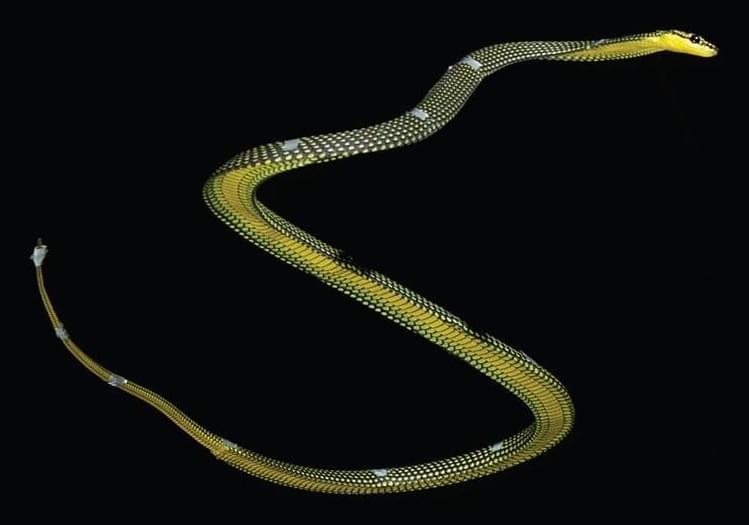When the paradise tree snake flies from one tall branch to another, its body ripples with waves like green cursive on a blank pad of blue sky. That movement, aerial undulation, happens in each glide made by members of the Chrysopelea family, the only known limbless vertebrates capable of flight. Scientists have known this, but have yet to fully explain it.
For more than 20 years, Jake Socha, a professor in the Department of Biomedical Engineering and Mechanics at Virginia Tech, has sought to measure and model the biomechanics of snake flight and answer questions about them, like that of aerial undulation’s functional role. For a study published by Nature Physics, Socha assembled an interdisciplinary team to develop the first continuous, anatomically-accurate 3D mathematical model of Chrysopelea paradisi in flight.
The team, which included Shane Ross, a professor in the Kevin T. Crofton Department of Aerospace and Ocean Engineering, and Isaac Yeaton, a recent mechanical engineering doctoral graduate and the paper’s lead author, developed the 3D model after measuring more than 100 live snake glides. The model factors in frequencies of undulating waves, their direction, forces acting on the body, and mass distribution. With it, the researchers have run virtual experiments to investigate aerial undulation.









Comments are closed.